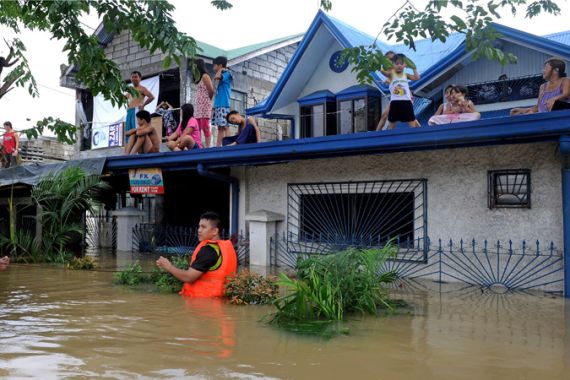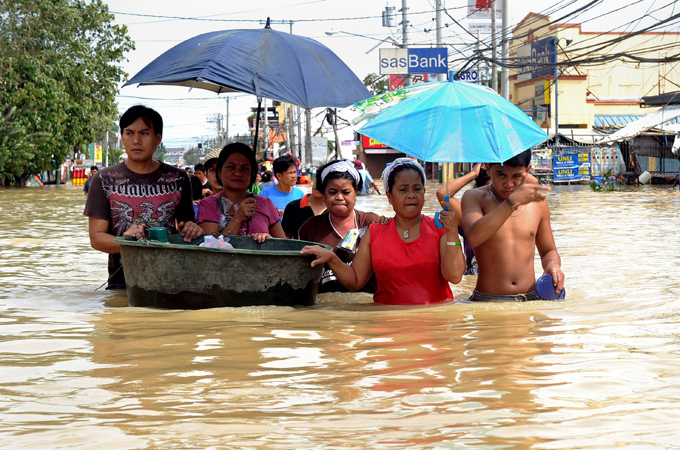Philippines steps up typhoon relief efforts
Aid delivered to thousands still stranded on rooftops by floodwaters, but at least 15 villages still inaccessible.

 |
| Philippine authorites have delivered food, medicine and dry clothes to families who had waited out the floods [AFP] |
Floodwaters are slowly receding in many parts of the Philippines after two typhoons killed nearly 60 people.
Philippine authorities have delivered aid to thousands of people who are are still stranded on rooftops, who have been hit with the back-to-back typhoons.
Keep reading
list of 4 itemsAfter the Hurricane
World’s coral reefs face global bleaching crisis
Why is Germany maintaining economic ties with China?
Mayor James de Jesus of the town of Calumpit, in the badly-hit Bulacan province, told the AP news agency that at least 15 villages in the region were still inaccessible.
“Evacuation centres are crowded and cannot accommodate any more families,” said de Jesus.
Typhoon Nalgae pummelled the Philippines’ main Luzon island on Saturday, hitting many of the same areas that Typhoon Nesat had torn through five days earlier.
The Philippines endures about 20 major storms annually, but officials said Nesat and Nalgae were among the most powerful this year with their massive rain bands covering most of Luzon.
Nalgae has now moved into the South China Sea and is heading towards southern China with winds of 130 kilometre per hour.
During a nationally televised meeting with disaster response agencies, President Benigno Aquino III ordered authorities to study how villagers and fishermen could be forced to follow storm warnings to prevent casualties in the future.
In the last four months, prolonged monsoon flooding, typhoons and storms across Southeast Asia, China, Japan and South Asia have left more than 600 people dead or missing.
In India alone, the damage is estimated to be worth $1bn.
Several studies point to an intensification of the Asian summer monsoon rainfall with increased atmospheric carbon dioxide concentrations, according to the state-run Indian Institute of Tropical Meteorology.
Still, it is not clear that the damaging weather is entirely due to climate change, it said.
The damage on agriculture and infrastructure from the earlier typhoon in the Philippines was estimated at $200 million.
Rice and vegetables could be obtained from the country’s south in case of supply shortfalls due to damaged
farms and blocked roads in the north, said officials.